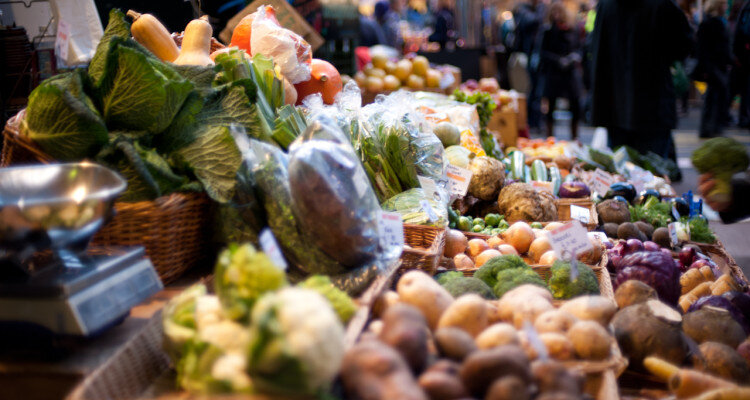Imagine biting into a crisp apple that was plucked from an orchard just miles away, or enjoying a salad made with freshly picked greens from your neighborhood farm. Beyond the vibrant flavors and nourishing qualities, there’s something even more profound happening — you’re contributing to a more sustainable future.
In today’s fast-paced, globalized world, our food often travels thousands of miles before it reaches our plates. But a remarkable shift is underway. More people are turning to locally sourced food, seeking options that aren’t just fresher, but also better for the earth and our communities. Let’s dive into why local food is more sustainable and explore the far-reaching impacts of this choice.
What Is Local Food?
Local food typically refers to produce, meats, and other food products that are grown, raised, or produced close to where they’re sold and consumed. While the definition of “local” can vary, it’s widely accepted to mean food that travels a relatively short distance — often less than 100 miles from farm to table.
The Environmental Advantages of Local Food
Reduced Food Miles and Lower Carbon Emissions
One of the most compelling reasons local food is more sustainable boils down to food miles. Large-scale, industrial agriculture transports food over vast distances — sometimes across continents — using fuel-intensive planes, ships, and trucks. Every mile adds emissions to the air, contributing to greenhouse gases and climate change.
By sourcing food locally, we drastically minimize transportation fuel use and lower greenhouse gas emissions. Studies have shown that food grown close to home can reduce transport-related emissions by up to five times compared to imported alternatives. The result? Fresher products and a healthier planet.
Minimal Packaging and Less Waste
When food is transported over long distances, it often comes heavily packaged to preserve freshness and protect against spoilage. Local producers, on the other hand, may use less (or even reusable) packaging. This shift leads to a significant reduction in plastic and non-biodegradable waste ending up in landfills.
Supporting Biodiversity and Seasonality
Local farmers typically grow a greater variety of crops, often focusing on seasonal produce best suited to the region’s climate. This agricultural diversity promotes resilient ecosystems and helps preserve heirloom varieties that might otherwise vanish in the face of industrial monoculture farming practices.
Strengthening Local Economies and Communities
Economic Resilience
Purchasing local food supports small-scale farmers, family-run businesses, and the local economy. Instead of profits flowing to distant corporations or export markets, your dollar stays in the community, helping to create local jobs, stimulate rural development, and fuel additional growth.
Building Relationships and Trust
Buying locally fosters connection. Consumers get to know the real people who grow or raise their food, ask questions about farming methods, and gain confidence in the quality and safety of their purchases. This direct relationship creates a food system built on trust and transparency.
Food Security and Community Wellbeing
A robust local food system increases food security. Communities that source a significant portion of their food locally are less vulnerable to global supply chain disruptions, economic shocks, or transportation breakdowns. The COVID-19 pandemic revealed how fragile global food systems can be, making local food networks more valuable than ever.
Health Benefits of Eating Local
Fresher, More Nutritious Food
Local fruits, vegetables, dairy, and meat generally arrive on your table soon after harvest. This short turnaround means produce retains more vitamins, minerals, and flavor compared to items stored and transported over long distances.
Fewer Preservatives and Additives
Because locally sourced food doesn’t need to survive long shipping times, it’s less likely to contain preservatives or artificial ingredients meant to extend shelf life. This often translates to cleaner, more wholesome nutrition.
Environmental and Social Challenges of Global Food Systems
Large-scale, long-distance food supply chains can obscure the origins of our food and disconnect us from its production. Industrial farming, while efficient, is often associated with:
- Higher greenhouse gas emissions
- Habitat destruction and loss of biodiversity
- Intensive use of chemical fertilizers and pesticides
- Exploitation of farm workers
In contrast, local foods are generally produced on smaller farms that rely on more ecologically responsible practices. They often use fewer chemicals, conserve water, and take pride in being stewards of the environment.
Is Local Food Always the Most Sustainable Choice?
While local food offers enormous sustainability and social benefits, it’s not a silver bullet for every situation. There are instances where non-local foods grown more efficiently or in more suitable climates can have a lower environmental footprint than poorly managed local farms. However, choosing local typically brings you closer to truly sustainable options — especially when combined with organic and regenerative practices.
How to Incorporate More Local Food Into Your Life
Shop at Farmers’ Markets
Meet growers in person, try unique products, and discover what’s in season. Farmers’ markets are a great entry point to eating locally.
Join a Community Supported Agriculture (CSA) Program
Buying a share in a local farm ensures you receive a regular selection of fresh, seasonal produce while supporting farmers directly.
Choose Local in Grocery Stores
More supermarkets now highlight local options in their produce, dairy, and meat departments. Seek out these choices when shopping.
Grow Your Own Food
Even a small patio garden can contribute to a local food system. Herbs, salad greens, and tomatoes are easy to grow and incredibly rewarding.
The Bigger Picture: Empowering Change Through Local Choices
When we choose local foods, we send a powerful message about the world we want to inhabit. Beyond the freshness and flavor, every local carrot, apple, or loaf of bread is a vote for reduced emissions, thriving communities, and protected ecosystems.
Embracing local food isn’t just a trend — it’s a meaningful step toward sustainability, resilience, and health.
Conclusion
Local food is more sustainable for a host of reasons: it slashes food miles, cuts waste, supports biodiversity, empowers local economies, and inspires communities to connect with what they eat. By sourcing our meals closer to home, we make choices that benefit ourselves, our neighbors, and our environment.
The path toward a sustainable future is paved with the small, everyday decisions we make at the table and the market. Choosing local food is one of the simplest — and most delicious — ways to nourish a healthier planet.
Call to Action
Ready to make a difference? Make your next meal a local one! Visit your nearby farmers’ market, look for “local” signs at the grocery store, or even start your own backyard garden. Share your local food experiences with friends and family, and help spark a movement toward sustainability from right where you live.






